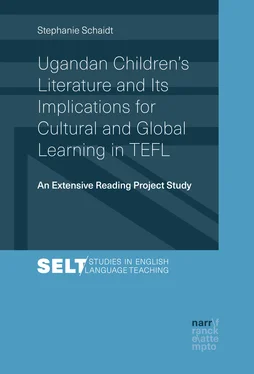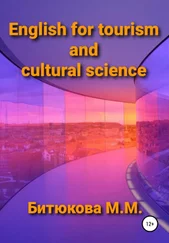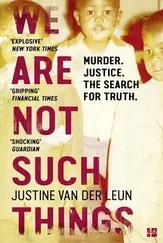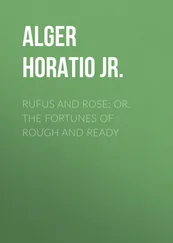Written literature (not oral) for children by writers based in countries on the African continent is a rather new phenomenon, which started in the 1960s. In the last few years, however, the number of publishing houses and writers in African countries has increased immensely and, therefore, there are also many children’s texts written and published by writers and publishing houses on the African continent today. Furthermore, in the age of globalisation where national boundaries are constantly crossed, writers and readers with African roots live in countries all around the world and societies on the African continent are also multicultural. There are writers with Western backgrounds who spend much of their lifetime in African countries and tell their stories from wherever they are. Barbara Kimenye, a British-Ugandan author, is such an example of a hybrid writer who describes herself as both grounded in a Ugandan and a British culture. Her novels, despite addressing an East-African readership, also include features of British boarding school stories (see Chapter 4.4.2). Luisa Natiwi, a Ugandan writer who now lives in Hamburg, Germany, wrote and published her first children’s book set in Uganda in German and so clearly addresses it to a German readership ( Dr. Limilim, der Urwalddoktor, 2013).
These contemplations show that it is very difficult to propose clear characteristics for a definition of Ugandan children’s fiction given that it is a rather complex issue with various problematic aspects, particularly involving different understandings of childhood and the concept of transculturality. For an inclusion and further analysis in my study, I selected 18 texts that are set in Uganda and written and published for young readers. Since I base my study on a wide concept of culture, the nationality/Ugandan background of the writers of the texts was not decisive in my text selection process.3 However, in order to provide the students in Germany with counter-representations of Western discourse, I placed particular emphasis on the criterion of distribution and only chose texts that are (also) published and read by children in Uganda. During my study stay in Uganda, I looked for the texts in bookshops and libraries and was recommended titles by students, teachers and the writers that I interviewed. Besides this, the relevance of the texts for the age group of 14- to 16-year-olds and the level of linguistic difficulty of the texts, i.e. their suitability for learners of the English language at intermediate level (A2-B1) was decisive for text selection. Furthermore, in my selection process I drew on criteria by Genetsch and Hallet (2010), who suggest exposing students to a multitude of different texts that both complement and also contradict one another, thus entailing content-related ties and presenting multiple perspectives on an issue (see also Chapter 2.6). Therefore, I chose texts by different writers that are all set and read in Uganda but are concerned with various topics and/or deal with the same topic in different ways for inclusion in the reading project.
4.2 History of Ugandan Children’s Literature
The analysis of the texts that were chosen for integration in the extensive reading project will be preceded by an overview of the (pre-)colonial history of literature produced for and/or consumed by children in Uganda. Before the arrival of the Europeans in Uganda,1 young people in Uganda enjoyed texts that were oral in nature. They consisted of folktales, myths, songs, riddles and proverbs which were passed by word of mouth.2 Missionaries set up the first formal schools in the country in the end of the 19 thcentury and taught the children in Uganda how to read and write (Ssekamwa & Lugumba, 2001, p. 2). This marked the beginning of the consumption of written literature by children in Uganda.
Orature was denigrated by the colonisers; instead literature was read in Ugandan schools which was prescribed as suitable by the Europeans. Most of the books which were read and studied by young people in Uganda before independence were imported from Britain. Children in Uganda could not easily relate to these texts and were rather alienated by them. Emenyonu (1974, p. 47) remarks for the Nigerian context:
Before 1960 the Nigerian child read nothing but British literature, and he had to be left to figure out what was meant by Big Ben, Westminster Abbey, Trafalgar Square and the Thames. The poems he was forced to read and memorize talked about bleak and chilly mid-winter, snow flakes [sic], men who galloped by whenever the moon and stars are out, great ports and swarming cities, and of course the Pied Piper – subjects and images which conveyed no meaning and no feeling to the average Nigerian child in his natural environment.
In the colonial era, it was mainly missionaries who collected and wrote down African folktales and children’s stories. Rosetta Gage Bakerville, for example, published The King of the Snakes and Other Folk-Lore Stories from Uganda (1922) and The Flame Tree and other Folk-Lore Stories from Uganda (1925). These stories were, however, mainly addressed at a European readership and not specifically meant for children. Colonial stories of that type often presented Africa controversially; both as dark and dangerous but also as an exotic paradise, a place full of wildlife and adventure (Khorana, 1994, p. xiv). African people were frequently stereotyped and denigrated in this literature: “In children’s fiction, even adult Africans are portrayed as childish or as grotesque caricatures of human beings; they are irresponsible and fearful, and they take childish glee in trinkets and toys” (ibid., p. xviii). White characters, on the other hand, were usually presented as superior. When those books were brought to African countries and used in schools, the children who read these stories were not only alienated by them but also induced to think of their own culture as minor and themselves as ‘other’.
European publishers also started to publish for African children during that time. Many of these texts comprised “simply European literature in special school editions with vocabulary lists and questions” (Schmidt, 1981, p. 21). They carried “a strong moral message from an alien value system” (ibid.). European missionaries and teachers used them to ‘europeanise’ African children. The books were intended as tools to improve literacy on the continent and also as an instruction aid to teach children about Christianity (ibid., p. 23).
Publishing for children in African countries started after their independence, in the 1960s and 1970s
when a series of seminars and conferences were held throughout Africa to address the problems of colonial bias in school curricula and textbooks; to develop relevant classroom materials; to publish trade books with a suitable African content; to write in African languages; and to determine the role of national governments in promoting and assisting a children’s book industry. (Khorana, 1994, p. xxx)
During that time European publishing houses such as Oxford University Press, Heinemann and Macmillan set up offices in Uganda and published the first children’s texts by Ugandans. Nevertheless, even during that time children in Uganda mainly read texts that were imported from Western countries, as became clear in the interviews with writers who grew up in the country during that time:
When I was growing up, most of the books were in English and were about white people, Enid Blyton and all those other books. (Baingana, 2014)3
And the English stories the teacher used to read to us were not written by Ugandan writers. I cannot recall any story we read at school which was written by a Ugandan writer, not even by an African writer. We just heard stories such as Cinderella and so on. They were just Western stories. (Namukasa, 2014)4
Читать дальше












